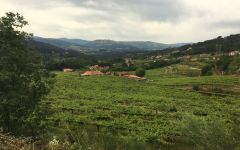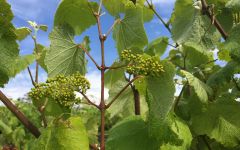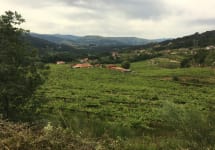Morgadio Albarino 2004
-
Wine
Enthusiast

Product Details
Your Rating
Somm Note
Winemaker Notes
"Pineapple and flowers create a candied, porous nose, while the flavor profile is about melon, papaya, pear and spice. A rich and persistent finish scores this wine some points, as does the full, chewy mouthfeel. Nice and balanced."
-Wine Enthusiast
Professional Ratings
- Wine Enthusiast
Other Vintages
2017-
Wine
Spectator
-
Wilfred
Wong -
Wine
Enthusiast
-
Wine
Enthusiast
-
Wine &
Spirits
-
Robert
Parker
-
Wine
Enthusiast
-
Wine
Spectator




Galicia's legendary Albariño grape until the late 1980s remained just that--a legend. Often thought to be distant relative, perhaps even an immediate ancestor of the Riesling, its high quality and extreme scarcity assured its perennial position as Spain's (and one of Europe's) most expensive wine grapes. The high cost tempted many to stretch production through overproduction and blending resulting in frequent disappointment on the part of the adventurous taster. Authentic examples were produced in tiny, unstable lots which never made it outside the region. In 1988 the D.O. Rías Baixas was established as part of an ongoing movement to recuperate and assure authenticity. Refocusing attention on a superior microclimate and fuller style, Morgadío ("only son" in Gallego) set new standards upon its release.
In 1984 a farm named Morgadío in the Rías Baixas subdistrict of Condado do Tea near the aldea of Albeos was consolidated from multiple existing owners, and planting began. Vineyard area was gradually expanded to its current 148 acres. Within Rías Baixas there are three primary subdistricts: El Rosal and Val do Salnés on Galicia's rainy Atlantic coast, and Condado do Tea inland on the north bank of the Miño River, a situation remarkably reminiscent of Germany's Rheingau. Condado's benign climate, southern exposure and soil of brilliantly-reflective granite sand serve to maximize the Albariño's concentration.

Bright and aromatic with distinctive floral and fruity characteristics, Albariño has enjoyed a surge in popularity and an increase in plantings over the last couple of decades. Thick skins allow it to withstand the humid conditions of its homeland, Rías Baixas, Spain, free of malady, and produce a weighty but fresh white. Somm Secret—Albariño claims dual citizenship in Spain and Portugal. Under the name Alvarinho, it thrives in Portugal’s northwestern Vinho Verde region, which predictably, borders part of Spain’s Rías Baixas.

Named after the rías, or estuarine inlets, that flow as far as 20 miles inland, Rías Baixas is an Atlantic coastal region with a cool and wet maritime climate. The entire region claims soil based on granite bedrock, but the inlets create five subregions of slightly different growing environments for its prized white grape, Albariño.
Val do Salnés on the west coast is said to be the birthplace of Albariño; it is the coolest and wettest of all of the regions. Having been named as the original subregion, today it has the most area under vine and largest number of wineries.
Ribeira do Ulla in the north and inland along the Ulla River is the newest to be included. It is actually the birthplace of the Padrón pepper!
Soutomaior is the smallest region and is tucked up in the hills at the end of the inlet called Ria de Vigo. Its soils are light and sandy over granite.
O Rosal and Condado do Tea are the farthest south in Rías Baixas and their vineyards actually cover the northern slopes of the Miño River, facing the Vinho Verde region in Portugal on its southern bank.
Albariño gives this region its fame and covers 90% of the area under vine. Caiño blanco, Treixadura and Loureira as well as occasionally Torrontés and Godello are permitted in small amounts in blends with Albariño. Red grapes are not very popular but Mencía, Espadeiro and Caiño Tinto are permitted and grown.
